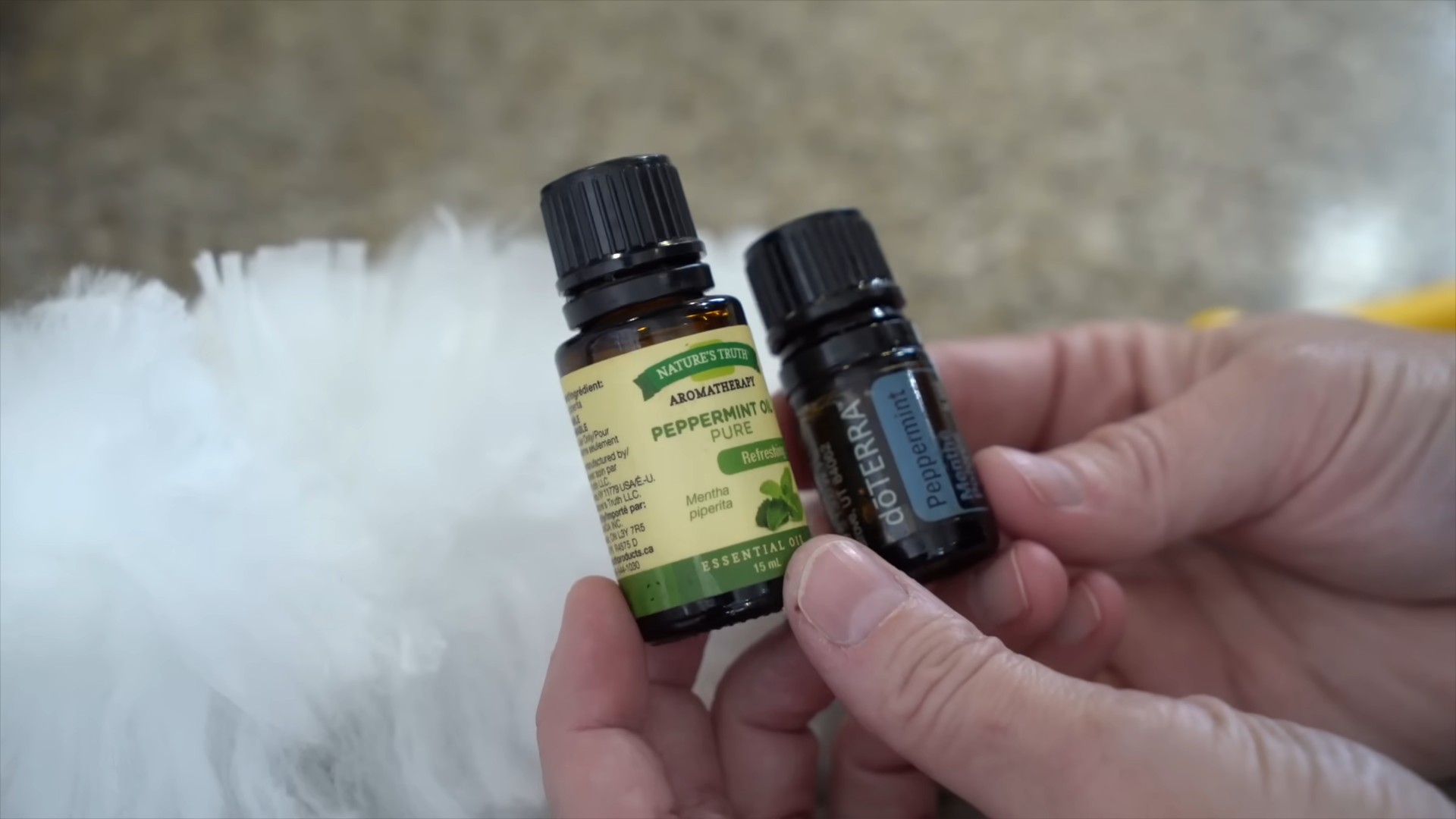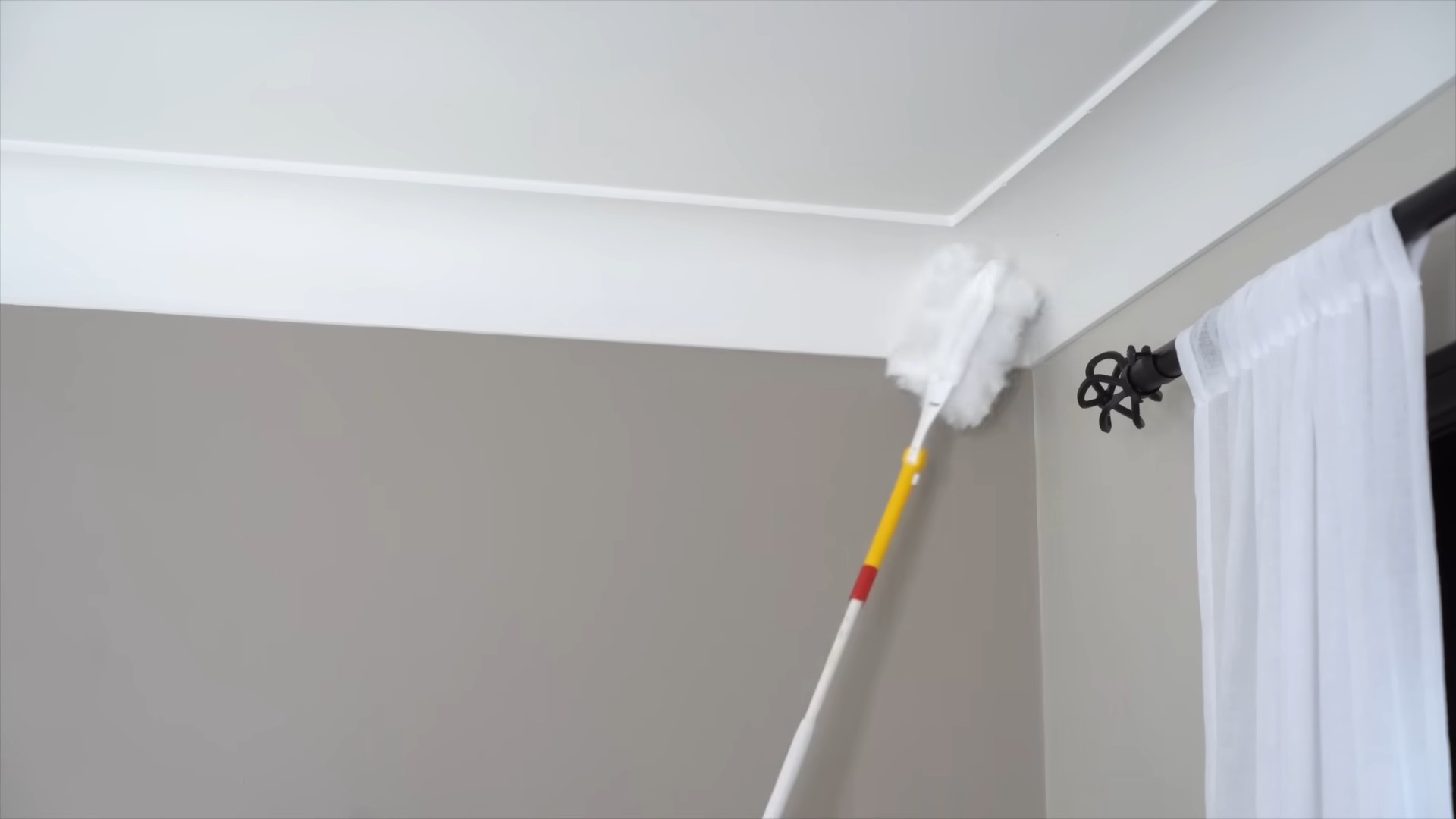Peppermint Oil Bug Repellent: Tired of those pesky critters turning your precious garden into their personal buffet? I know the feeling! There’s nothing more frustrating than nurturing your plants, only to find them riddled with holes and crawling with unwanted guests. But don’t reach for those harsh chemicals just yet! There’s a natural, effective, and wonderfully fragrant solution waiting for you: Peppermint Oil Bug Repellent.
For centuries, cultures around the world have recognized the power of plants to deter insects. From ancient Egyptians using herbs in their homes to ward off pests, to traditional Ayurvedic practices incorporating plant-based remedies, the wisdom of nature has always been a guiding force. Now, we can tap into that same wisdom to protect our own gardens.
Why is a DIY Peppermint Oil Bug Repellent so essential? Because it offers a safe and eco-friendly alternative to commercial insecticides. Many of us are increasingly concerned about the impact of synthetic chemicals on our health, our pets, and the environment. This simple DIY solution allows you to safeguard your garden without compromising your values. Plus, it’s incredibly easy and cost-effective to make! I’m going to show you how to create your own potent peppermint oil bug repellent, so you can enjoy a thriving, pest-free garden all season long. Let’s get started!

DIY Peppermint Oil Bug Repellent: Keep Pests Away Naturally!
Hey everyone! Tired of those pesky bugs invading your space? Me too! And I’m not a fan of harsh chemicals, especially around my family and pets. That’s why I’m super excited to share my go-to DIY peppermint oil bug repellent. It’s effective, smells amazing, and uses ingredients you probably already have! Let’s get started!
What Makes Peppermint Oil a Great Bug Repellent?
Peppermint oil contains a high concentration of menthol, which is naturally repellent to many insects. Bugs like mosquitoes, ants, spiders, and even mice (yes, mice!) are often deterred by its strong scent. Plus, unlike chemical sprays, it’s generally safe for humans and pets when used correctly.
Gathering Your Supplies
Before we dive in, let’s make sure you have everything you need. This is a pretty simple project, so the list is short and sweet:
* Pure Peppermint Essential Oil: This is the star of the show! Make sure you’re using 100% pure peppermint essential oil for the best results. Avoid fragrance oils, as they won’t have the same bug-repelling properties.
* Distilled Water: Using distilled water helps prevent bacterial growth in your spray. Tap water can work in a pinch, but distilled is always better.
* Rubbing Alcohol (Isopropyl Alcohol) or Witch Hazel: This acts as an emulsifier, helping the peppermint oil and water mix properly. Without it, the oil will just float on top.
* Spray Bottle: A clean, empty spray bottle is essential. I prefer a dark-colored bottle to protect the essential oil from light, which can degrade its quality over time. A 16-ounce bottle is a good size to start with.
* Measuring Spoons or Cups: For accurate measurements.
* Small Funnel (Optional): This can make pouring ingredients into the spray bottle much easier and less messy.
Making Your Peppermint Oil Bug Repellent: Step-by-Step
Okay, now for the fun part! Follow these steps carefully to create your own effective bug repellent.
1. Clean Your Spray Bottle: Before you start, make sure your spray bottle is clean and dry. This will prevent any unwanted contaminants from affecting your repellent. I usually wash mine with hot, soapy water and then rinse it thoroughly.
2. Add Rubbing Alcohol or Witch Hazel: Pour 1 tablespoon of rubbing alcohol or witch hazel into your spray bottle. This is crucial for helping the peppermint oil and water mix properly. If you skip this step, the oil will just sit on top of the water.
3. Add Peppermint Essential Oil: Now, add 15-20 drops of pure peppermint essential oil to the spray bottle. The amount you use will depend on the strength of the oil and your personal preference. I usually start with 15 drops and then add more if I feel it’s needed. Remember, a little goes a long way!
4. Add Distilled Water: Fill the rest of the spray bottle with distilled water, leaving a little space at the top. Don’t fill it all the way to the brim, as you’ll need room to shake the mixture.
5. Shake Well: Secure the spray nozzle onto the bottle and shake vigorously for at least 30 seconds. This will ensure that the peppermint oil, rubbing alcohol (or witch hazel), and water are thoroughly mixed. You’ll need to shake the bottle each time before you use it, as the oil and water will naturally separate over time.
6. Test Spray: Before you start spraying everywhere, test the repellent in an inconspicuous area to make sure it doesn’t stain or damage any surfaces.
Using Your Peppermint Oil Bug Repellent: Tips and Tricks
Now that you’ve made your repellent, here are some tips on how to use it effectively:
* Spray Around Entry Points: Focus on spraying around doors, windows, and other entry points where bugs might be getting into your home.
* Spray on Fabrics: You can spray the repellent on fabrics like curtains, rugs, and furniture, but always test it in an inconspicuous area first to make sure it doesn’t stain.
* Spray Outdoors: Use the repellent outdoors to keep bugs away from your patio, deck, or garden. Be careful not to spray directly on plants, as the oil can be harmful to some species.
* Reapply Regularly: The repellent will lose its effectiveness over time, so you’ll need to reapply it regularly, especially after rain or heavy use. I usually reapply every few days or as needed.
* Avoid Direct Contact with Eyes and Skin: While peppermint oil is generally safe, it can be irritating to the eyes and skin. Avoid spraying it directly on your face or body. If you do get it on your skin, wash it off with soap and water.
* Store Properly: Store your peppermint oil bug repellent in a cool, dark place away from direct sunlight. This will help preserve the quality of the essential oil.
Specific Bug Targets and Application Methods
Let’s break down how to use this repellent for specific bug problems:
Ants
Ants are a common household pest. I find this repellent works wonders on them!
* Target: Trails, entry points (cracks in walls, under doors), around food sources.
* Application: Spray directly on ant trails to disrupt their scent trails. Wipe up the dead ants after a few minutes. Spray around entry points to prevent them from coming back.
Spiders
Spiders are another unwelcome guest in many homes.
* Target: Corners of rooms, under furniture, around windows and doors, webs.
* Application: Spray directly on spiders if you see them. Spray around areas where spiders are likely to build webs.
Mosquitoes
While this isn’t a replacement for DEET in high-risk areas, it can offer some relief.
* Target: Around patios, decks, near standing water, on clothing (test first!).
* Application: Spray around your outdoor seating areas before spending time outside. Lightly mist clothing, but test a small area first to ensure it doesn’t stain. Avoid spraying directly on skin, especially for children.
Mice
Believe it or not, peppermint oil can deter mice!
* Target: Entry points (holes in walls, under doors), areas where you’ve seen mice droppings, near food storage.
* Application: Soak cotton balls in peppermint oil and place them in areas where you’ve seen mice activity. Refresh the cotton balls every few days. Spray around potential entry points.
Important Considerations and Safety Precautions
While peppermint oil is a natural and generally safe alternative to chemical bug repellents, it’s important to keep these considerations in mind:
* Allergies: Some people may be allergic to peppermint oil. If you experience any skin irritation or allergic reaction after using the repellent, discontinue use immediately.
* Pets: While peppermint oil is generally safe for pets, it can be toxic if ingested in large quantities. Keep the repellent out of reach of pets and avoid spraying it directly on them. If your pet ingests the repellent, contact your veterinarian immediately.
* Children: Keep the repellent out of reach of children. Avoid spraying it directly on children’s skin, especially infants.
* Pregnancy and Breastfeeding: If you are pregnant or breastfeeding, consult with your doctor before using peppermint oil.
* Not a Replacement for Professional Pest Control: This DIY repellent is a great way to manage minor bug problems, but it’s not a replacement for professional pest control if you have a serious infestation.
Troubleshooting
Sometimes, things don’t go exactly as planned. Here are some common issues and how to fix them:
* Repellent Doesn’t Seem to Be Working: Make sure you’re using 100% pure peppermint essential oil. The concentration of menthol is key. Also, ensure you’re reapplying frequently enough.
* Spray Bottle is Clogged: The peppermint oil can sometimes clog the spray nozzle. Try running hot water through the nozzle to clear it. If that doesn’t work, you may need to replace the nozzle.
* Repellent is Staining Fabrics: Test the repellent in an inconspicuous area before spraying it on fabrics. If it stains, try diluting the mixture with more water.
* Strong Peppermint Smell: If the peppermint smell is too strong, dilute the mixture with more water.
Variations and Add-Ins
Want to customize your bug repellent even further? Here are a few ideas:
* Add Other Essential Oils: You can add other bug-repelling essential oils to your mixture, such as lavender, citronella, eucalyptus, or tea tree oil. Experiment with different combinations to find what works best for you.
* Add Vinegar: A small amount of vinegar can help repel certain types of bugs. Add 1-2 tablespoons

Conclusion
So, there you have it! Creating your own Peppermint Oil Bug Repellent is not only incredibly simple, but it’s also a game-changer for enjoying the outdoors without the constant annoyance of buzzing, biting insects. We’ve walked you through the easy steps, highlighting the natural power of peppermint oil and its effectiveness in deterring a wide range of pests.
Why is this DIY trick a must-try? Because it offers a safe, natural alternative to harsh chemical-laden bug sprays. You know exactly what’s going into your repellent, avoiding potentially harmful ingredients that can irritate skin or pose health risks. Plus, it’s incredibly cost-effective! A small bottle of peppermint oil goes a long way, making this a budget-friendly solution for keeping bugs at bay. And let’s not forget the delightful, refreshing scent of peppermint – a welcome change from the often-pungent odor of commercial repellents.
But the benefits don’t stop there. This DIY repellent is also incredibly versatile. Feel free to experiment with different carrier oils to find what works best for your skin. Jojoba oil is a great option for sensitive skin, while almond oil provides extra moisturizing benefits. You can also adjust the concentration of peppermint oil to suit your needs. For areas with a high bug population, you might want to increase the amount slightly.
Looking for variations? Consider adding other essential oils known for their insect-repelling properties. Lavender, citronella, eucalyptus, and tea tree oil can all be incorporated into your blend for added protection and a more complex aroma. A few drops of each can create a powerful and pleasant-smelling shield against unwanted pests. You can also infuse witch hazel with fresh peppermint leaves for a stronger base. Simply steep the leaves in witch hazel for a few days, strain, and then use this infused witch hazel as your carrier liquid.
Another fantastic variation is to create peppermint oil-infused cotton balls. Simply soak cotton balls in undiluted peppermint oil and place them in areas where you’re experiencing bug problems, such as near windows, doors, or in closets. This is a great way to repel moths and other insects from your home. Remember to replace the cotton balls every few weeks as the scent fades.
We truly believe that once you try this Peppermint Oil Bug Repellent, you’ll never go back to store-bought sprays. It’s effective, natural, affordable, and smells amazing. It’s a win-win-win!
So, what are you waiting for? Gather your ingredients, follow the simple steps, and create your own bug-repelling magic. We’re confident that you’ll be thrilled with the results.
We’re eager to hear about your experiences! Did you find this recipe effective? Did you try any variations? What worked best for you? Share your tips, tricks, and feedback in the comments below. Let’s create a community of bug-free enthusiasts! Your insights could help others discover the power of natural bug repellents and enjoy the outdoors without the constant swatting and itching. Let us know if you have any questions, we are here to help.
FAQ
What kind of peppermint oil should I use?
It’s crucial to use 100% pure peppermint essential oil. Avoid fragrance oils or synthetic peppermint scents, as they won’t have the same insect-repelling properties and may contain harmful chemicals. Look for essential oils that are labeled as “therapeutic grade” or “pure essential oil” to ensure you’re getting a high-quality product. Check the ingredient list to make sure it only contains peppermint oil.
How often should I reapply the Peppermint Oil Bug Repellent?
Reapply the repellent every 2-3 hours, or more frequently if you’re sweating heavily or swimming. The effectiveness of the repellent will diminish over time as the peppermint oil evaporates. It’s also a good idea to reapply after toweling off. Pay attention to how your skin feels; if you start to notice bugs buzzing around you again, it’s time for another application.
Can I use this Peppermint Oil Bug Repellent on my children?
While peppermint oil is generally considered safe for topical use, it’s important to exercise caution when using it on children, especially infants and young toddlers. It’s recommended to dilute the peppermint oil even further for children, using a lower concentration (around 1-2%). Always do a patch test on a small area of your child’s skin before applying it more widely to check for any allergic reactions or sensitivities. Avoid applying the repellent to their hands, as they may put their hands in their mouths. Consult with your pediatrician before using any essential oils on infants or young children.
Is Peppermint Oil Bug Repellent safe for pets?
Peppermint oil can be toxic to pets, especially cats and small dogs, if ingested or applied undiluted. Avoid using this repellent directly on your pets. If you want to use it in areas where your pets frequent, dilute it heavily and ensure they cannot lick or ingest it. Monitor your pets for any signs of distress or adverse reactions, such as drooling, vomiting, or difficulty breathing. Consult with your veterinarian before using any essential oils around your pets.
Can I use this Peppermint Oil Bug Repellent indoors?
Yes, you can use this repellent indoors to deter insects. However, be mindful of the scent, as it can be quite strong. You can spray it lightly around windows, doors, and other entry points. You can also soak cotton balls in peppermint oil and place them in areas where you’re experiencing bug problems, such as closets or pantries. Ensure adequate ventilation when using peppermint oil indoors.
What bugs does Peppermint Oil Bug Repellent repel?
Peppermint oil is effective at repelling a variety of insects, including mosquitoes, flies, ants, spiders, fleas, ticks, and moths. It works by disrupting the insects’ sense of smell, making it difficult for them to locate you. While it’s not a guaranteed solution for all bugs, it’s a natural and effective way to reduce your exposure to many common pests.
How should I store my homemade Peppermint Oil Bug Repellent?
Store your homemade repellent in a dark glass bottle in a cool, dry place away from direct sunlight. Essential oils can degrade when exposed to light and heat, so proper storage is essential to maintain their potency. A dark glass bottle will help protect the oil from light exposure. Make sure the bottle is tightly sealed to prevent evaporation. The repellent should last for several months if stored properly.
Can I use dried peppermint instead of peppermint oil?
While dried peppermint has a pleasant scent, it doesn’t contain the same concentrated insect-repelling properties as peppermint essential oil. The essential oil is extracted from the peppermint plant and contains a much higher concentration of the active compounds that deter insects. Dried peppermint may offer some mild repellent effects, but it won’t be as effective as using peppermint essential oil.
What are the signs of an allergic reaction to peppermint oil?
Signs of an allergic reaction to peppermint oil can include skin rash, itching, hives, redness, swelling, difficulty breathing, and dizziness. If you experience any of these symptoms after applying peppermint oil, discontinue use immediately and seek medical attention. It’s always a good idea to do a patch test before using peppermint oil more widely to check for any sensitivities.
Can I mix Peppermint Oil Bug Repellent with sunscreen?
It’s generally not recommended to mix peppermint oil bug repellent directly with sunscreen. Sunscreen needs to form a protective layer on your skin to effectively block UV rays, and mixing it with other substances can interfere with its effectiveness. It’s best to apply sunscreen first, let it absorb into your skin, and then apply the peppermint oil bug repellent separately. This will ensure that both products work as intended.




Leave a Comment